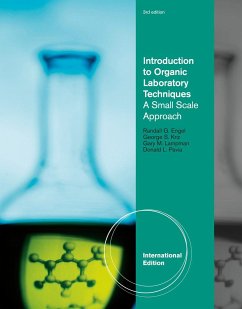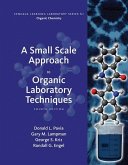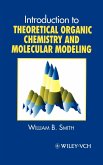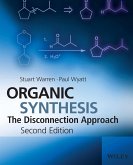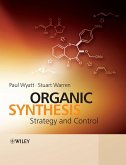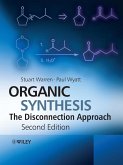Randall Engel, George Kriz, Gary Lampman
Introduction to Organic Laboratory Techniques: A Small-Scale Approach
Mitwirkender: Engel, Randall G.; Lampman, Gary M.; Kriz, George S.
Randall Engel, George Kriz, Gary Lampman
Introduction to Organic Laboratory Techniques: A Small-Scale Approach
Mitwirkender: Engel, Randall G.; Lampman, Gary M.; Kriz, George S.
- Broschiertes Buch
- Merkliste
- Auf die Merkliste
- Bewerten Bewerten
- Teilen
- Produkt teilen
- Produkterinnerung
- Produkterinnerung
Featuring new experiments, a new essay, and new coverage of nanotechnology, this organic chemistry laboratory textbook offers a comprehensive treatment of laboratory techniques including small scale and some microscale methods that use standard-scale ("macroscale") glassware and equipment. The book is organized based on essays and topics of current interest and covers a large number of traditional organic reactions and syntheses, as well as experiments with a biological or health science focus. Seven introductory technique-based experiments, thirteen project-based experiments, and sections on…mehr
Andere Kunden interessierten sich auch für
![A Small Scale Approach to Organic Laboratory Techniques A Small Scale Approach to Organic Laboratory Techniques]() Donald PaviaA Small Scale Approach to Organic Laboratory Techniques165,99 €
Donald PaviaA Small Scale Approach to Organic Laboratory Techniques165,99 €![Introduction to Theoretical Organic Chemistry and Molecular Modelling Introduction to Theoretical Organic Chemistry and Molecular Modelling]() William B. SmithIntroduction to Theoretical Organic Chemistry and Molecular Modelling221,99 €
William B. SmithIntroduction to Theoretical Organic Chemistry and Molecular Modelling221,99 €![Organic Synthesis Organic Synthesis]() Stuart WarrenOrganic Synthesis37,99 €
Stuart WarrenOrganic Synthesis37,99 €![Organic Synthesis Organic Synthesis]() Stuart WarrenOrganic Synthesis78,99 €
Stuart WarrenOrganic Synthesis78,99 €![Organic Synthesis Organic Synthesis]() Stuart WarrenOrganic Synthesis198,99 €
Stuart WarrenOrganic Synthesis198,99 €![Small Ring Heterocycles, Volume 42, Part 2 Small Ring Heterocycles, Volume 42, Part 2]() Small Ring Heterocycles, Volume 42, Part 2641,99 €
Small Ring Heterocycles, Volume 42, Part 2641,99 €![Small Ring Heterocycles, Volume 42, Part 1 Small Ring Heterocycles, Volume 42, Part 1]() Small Ring Heterocycles, Volume 42, Part 1641,99 €
Small Ring Heterocycles, Volume 42, Part 1641,99 €-
-
-
Featuring new experiments, a new essay, and new coverage of nanotechnology, this organic chemistry laboratory textbook offers a comprehensive treatment of laboratory techniques including small scale and some microscale methods that use standard-scale ("macroscale") glassware and equipment. The book is organized based on essays and topics of current interest and covers a large number of traditional organic reactions and syntheses, as well as experiments with a biological or health science focus. Seven introductory technique-based experiments, thirteen project-based experiments, and sections on green chemistry and biofuels spark students' interest and engage them in the learning process. Instructors may choose to offer Cengage Learning's optional Premium Website, which contains videos on basic organic laboratory techniques.
Hinweis: Dieser Artikel kann nur an eine deutsche Lieferadresse ausgeliefert werden.
Hinweis: Dieser Artikel kann nur an eine deutsche Lieferadresse ausgeliefert werden.
Produktdetails
- Produktdetails
- Verlag: Brooks/Cole / Cengage Learning EMEA
- Revised
- Seitenzahl: 1006
- Erscheinungstermin: Mai 2010
- Englisch
- Abmessung: 483mm x 483mm x 635mm
- Gewicht: 1844g
- ISBN-13: 9780538733281
- ISBN-10: 0538733284
- Artikelnr.: 29006873
- Herstellerkennzeichnung
- Libri GmbH
- Europaallee 1
- 36244 Bad Hersfeld
- gpsr@libri.de
- Verlag: Brooks/Cole / Cengage Learning EMEA
- Revised
- Seitenzahl: 1006
- Erscheinungstermin: Mai 2010
- Englisch
- Abmessung: 483mm x 483mm x 635mm
- Gewicht: 1844g
- ISBN-13: 9780538733281
- ISBN-10: 0538733284
- Artikelnr.: 29006873
- Herstellerkennzeichnung
- Libri GmbH
- Europaallee 1
- 36244 Bad Hersfeld
- gpsr@libri.de
Introduction.WELCOME TO ORGANIC CHEMISTRY.Laboratory Safety. Organization of the Textbook. Advance Preparation. Budgeting Time. Purpose.Part One: The Techniques.Technique 1: Laboratory Safety.Technique 2: The Laboratory Notebook, Calculations, and Laboratory Records.Technique 3: Laboratory Glassware: Care and Cleaning.Technique 4: How to Find Data for Compounds: Handbooks and Catalogs.Technique 5: Measurement of Volume and Weight.Technique 6: Heating and Cooling Methods.Technique 7: Reaction Methods.Technique 8: Filtration.Technique 9: Physical Constants of Solids: The Melting Point.Technique 10: Solubility.Technique 11: Crystallization: Purification of Solids.Technique 12: Extractions, Separations, and Drying Agents.Technique 13: Physical Constants of Liquids: The Boiling Point and Density.Technique 14: Simple Distillation.Technique 15: Fractional Distillation, Azeotropes.Technique 16: Vacuum Distillation, Manometers.Technique 17: Sublimation.Technique 18: Steam Distillation.Technique 19: Column Chromatography.Technique 20: Thin-Layer Chromatography.Technique 21: High-Performance Liquid Chromatography (HPLC).Technique 22: Gas Chromatography.Technique 23: Polarimetry.Technique 24: Refractometry.Technique 25: Infrared Spectroscopy.Technique 26: Nuclear Magnetic Resonance Spectroscopy (Proton NMR).Technique 27: Carbon-13 Nuclear Magnetic Resonance Spectroscopy.Technique 28: 6 Mass Spectrometry.Technique 29: Guide to the Chemical Literature.Part Two: Introduction to Basic Laboratory Techniques.Experiment 1: Solubility.Experiment 2: Crystallization.Experiment 3: Extraction.Experiment 4: A Separation and Purification Scheme.Experiment 4A: Extractions with a Separatory Funnel.Experiment 5: Chromatography.Experiment 5A: Thin-Layer Chromatography.Experiment 5B: Selecting the Correct Solvent for Thin-Layer Chromatography.Experiment 5C: Monitoring a Reaction with Thin Layer Chromatography.Experiment 5D: Column Chromatography.Experiment 6: Simple and Fractional Distillation.Experiment 7: Infrared Spectroscopy and Boiling-Point Determination.Experiment 8: Acetylsalicylic Acid.Experiment 9: Acetaminophen.Experiment 10: TLC Analysis of Analgesic Drugs.Experiment 11: Isolation of Caffeine.Experiment 11A: Extraction of Caffeine from Tea.Experiment 11B: Isolation of Caffeine from a Tea Bag.Experiment 12: Isopentyl Acetate (Banana Oil).Experiment 13: Isolation of Eugenol from Cloves.Experiment 14: Spearmint and Caraway Oil: (+)- and (-)-Carvones.Experiment 15: Isolation of Chlorophyll and Carotenoid Pigments from Spinach.Experiment 16: Ethanol from Sucrose.Part Three: Introduction to Molecular Modeling.Experiment 17: An Introduction to Molecular Modeling.Experiment 17A: The Conformations of n-Butane: Local Minima.Experiment 17B: Cyclohexane Chair and Boat Conformations.Experiment 17C: Substituted Cyclohexane Rings (Critical Thinking Exercise).Experiment 17D: cis- and trans-2-Butene.Experiment 18: Computational Chemistry.Experiment 18A: Heats of Formation: Isomerism, Tautomerism, and Regioselectivity.Experiment 18B: Heats of Reaction: SN1 Reaction Rates.Experiment 18C: Density-Electrostatic Potential Maps: Acidities of Carboxylic Acids.Experiment 18D: Density-Electrostatic Potential Maps: Carbocations.Experiment 18E: Density-LUMO Maps: Reactivities of Carbonyl Groups.Part Four: Preparations and Reactions of Organic Compounds.Experiment 19: Reactivities of Some Alkyl Halides.Experiment 20: Nucleophilic Substitution Reactions: Competing Nucleophiles.Experiment 20A: Competitive Nucleophiles with 1-Butanol or 2-Butanol.Experiment 20B: Competitive Nucleophiles with 2-Methyl-2-Propanol.Experiment 20C: Analysis.Experiment 21: Synthesis of n-Butyl Bromide and t-Pentyl Chloride.Experiment 21A: n-Butyl Bromide.Experiment 21B: t-Pentyl Chloride.Experiment 22: 4-Methylcyclohexene.Experiment 23: Methyl Stearate from Methyl Oleate.Experiment 24: Gas-Chromatographic Analysis of Gas
Introduction.WELCOME TO ORGANIC CHEMISTRY.Laboratory Safety. Organization of the Textbook. Advance Preparation. Budgeting Time. Purpose.Part One: The Techniques.Technique 1: Laboratory Safety.Technique 2: The Laboratory Notebook, Calculations, and Laboratory Records.Technique 3: Laboratory Glassware: Care and Cleaning.Technique 4: How to Find Data for Compounds: Handbooks and Catalogs.Technique 5: Measurement of Volume and Weight.Technique 6: Heating and Cooling Methods.Technique 7: Reaction Methods.Technique 8: Filtration.Technique 9: Physical Constants of Solids: The Melting Point.Technique 10: Solubility.Technique 11: Crystallization: Purification of Solids.Technique 12: Extractions, Separations, and Drying Agents.Technique 13: Physical Constants of Liquids: The Boiling Point and Density.Technique 14: Simple Distillation.Technique 15: Fractional Distillation, Azeotropes.Technique 16: Vacuum Distillation, Manometers.Technique 17: Sublimation.Technique 18: Steam Distillation.Technique 19: Column Chromatography.Technique 20: Thin-Layer Chromatography.Technique 21: High-Performance Liquid Chromatography (HPLC).Technique 22: Gas Chromatography.Technique 23: Polarimetry.Technique 24: Refractometry.Technique 25: Infrared Spectroscopy.Technique 26: Nuclear Magnetic Resonance Spectroscopy (Proton NMR).Technique 27: Carbon-13 Nuclear Magnetic Resonance Spectroscopy.Technique 28: 6 Mass Spectrometry.Technique 29: Guide to the Chemical Literature.Part Two: Introduction to Basic Laboratory Techniques.Experiment 1: Solubility.Experiment 2: Crystallization.Experiment 3: Extraction.Experiment 4: A Separation and Purification Scheme.Experiment 4A: Extractions with a Separatory Funnel.Experiment 5: Chromatography.Experiment 5A: Thin-Layer Chromatography.Experiment 5B: Selecting the Correct Solvent for Thin-Layer Chromatography.Experiment 5C: Monitoring a Reaction with Thin Layer Chromatography.Experiment 5D: Column Chromatography.Experiment 6: Simple and Fractional Distillation.Experiment 7: Infrared Spectroscopy and Boiling-Point Determination.Experiment 8: Acetylsalicylic Acid.Experiment 9: Acetaminophen.Experiment 10: TLC Analysis of Analgesic Drugs.Experiment 11: Isolation of Caffeine.Experiment 11A: Extraction of Caffeine from Tea.Experiment 11B: Isolation of Caffeine from a Tea Bag.Experiment 12: Isopentyl Acetate (Banana Oil).Experiment 13: Isolation of Eugenol from Cloves.Experiment 14: Spearmint and Caraway Oil: (+)- and (-)-Carvones.Experiment 15: Isolation of Chlorophyll and Carotenoid Pigments from Spinach.Experiment 16: Ethanol from Sucrose.Part Three: Introduction to Molecular Modeling.Experiment 17: An Introduction to Molecular Modeling.Experiment 17A: The Conformations of n-Butane: Local Minima.Experiment 17B: Cyclohexane Chair and Boat Conformations.Experiment 17C: Substituted Cyclohexane Rings (Critical Thinking Exercise).Experiment 17D: cis- and trans-2-Butene.Experiment 18: Computational Chemistry.Experiment 18A: Heats of Formation: Isomerism, Tautomerism, and Regioselectivity.Experiment 18B: Heats of Reaction: SN1 Reaction Rates.Experiment 18C: Density-Electrostatic Potential Maps: Acidities of Carboxylic Acids.Experiment 18D: Density-Electrostatic Potential Maps: Carbocations.Experiment 18E: Density-LUMO Maps: Reactivities of Carbonyl Groups.Part Four: Preparations and Reactions of Organic Compounds.Experiment 19: Reactivities of Some Alkyl Halides.Experiment 20: Nucleophilic Substitution Reactions: Competing Nucleophiles.Experiment 20A: Competitive Nucleophiles with 1-Butanol or 2-Butanol.Experiment 20B: Competitive Nucleophiles with 2-Methyl-2-Propanol.Experiment 20C: Analysis.Experiment 21: Synthesis of n-Butyl Bromide and t-Pentyl Chloride.Experiment 21A: n-Butyl Bromide.Experiment 21B: t-Pentyl Chloride.Experiment 22: 4-Methylcyclohexene.Experiment 23: Methyl Stearate from Methyl Oleate.Experiment 24: Gas-Chromatographic Analysis of Gas

